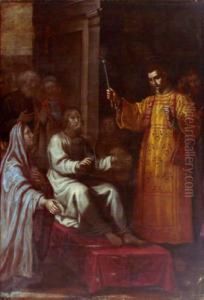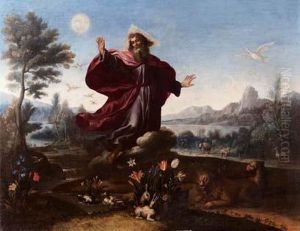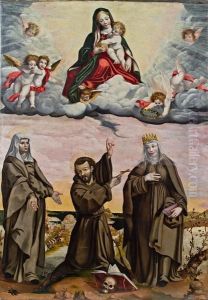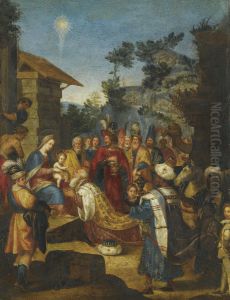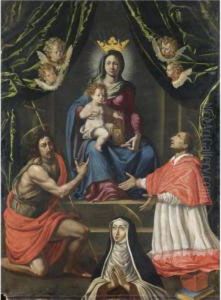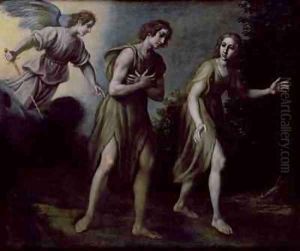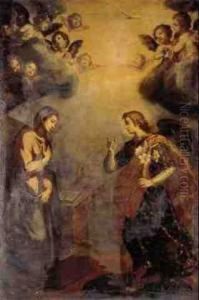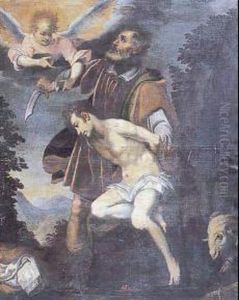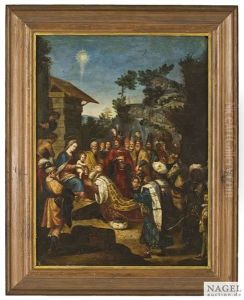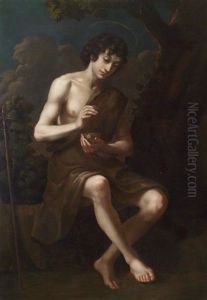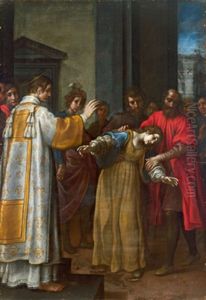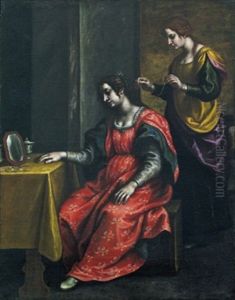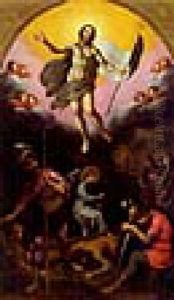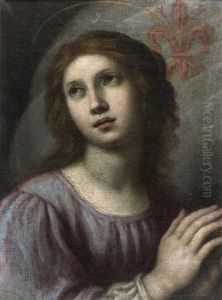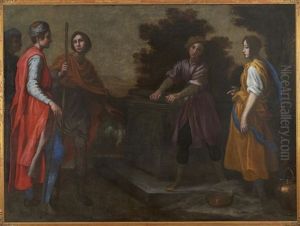Francesco Curradi Paintings
Francesco Curradi was an Italian painter of the Baroque period, born in Florence in 1570. He was the son of Taddeo Curradi, a furrier, and he showed an early interest in art. Curradi received his initial training in the studio of Giovanni Battista Naldini, a pupil of Jacopo Pontormo and a member of the late Mannerist school. Under Naldini, Curradi developed a strong foundation in drawing and was exposed to the Mannerist style, characterized by elongated figures and often complex compositions.
After his apprenticeship, Curradi's style evolved as he became influenced by the work of other contemporary Florentine artists, including Santi di Tito and Ludovico Cigoli, who were proponents of a more naturalistic approach to painting that was emerging at the time. This shift toward naturalism was part of the Counter-Reformation's emphasis on clear, direct religious imagery that could communicate effectively with the faithful.
Curradi became known for his religious works, often depicting scenes from the lives of the saints and the Virgin Mary. His paintings are noted for their gentle, serene figures and a soft, warm palette. One of his most famous works is the large altarpiece 'The Martyrdom of St. Lawrence' created for the church of San Lorenzo in Florence. Throughout his career, Curradi received numerous commissions for altarpieces and frescoes from various churches and confraternities, which contributed to his reputation as a respected artist in Florence.
In addition to his religious works, Curradi also painted mythological subjects and portraits, although these are less well known today. He was a contemporary of other notable artists such as Cristofano Allori and Matteo Rosselli, who were also working in Florence during this period.
Despite his success, there are few documented details about Curradi's personal life. He never married and did not have any known pupils who became prominent. However, his work continued to be appreciated after his death in 1661, and today, Curradi's paintings can be found in various art museums and churches in Italy. His contribution to the Florentine school of painting is recognized particularly for its combination of Mannerist traditions and the early Baroque style.

